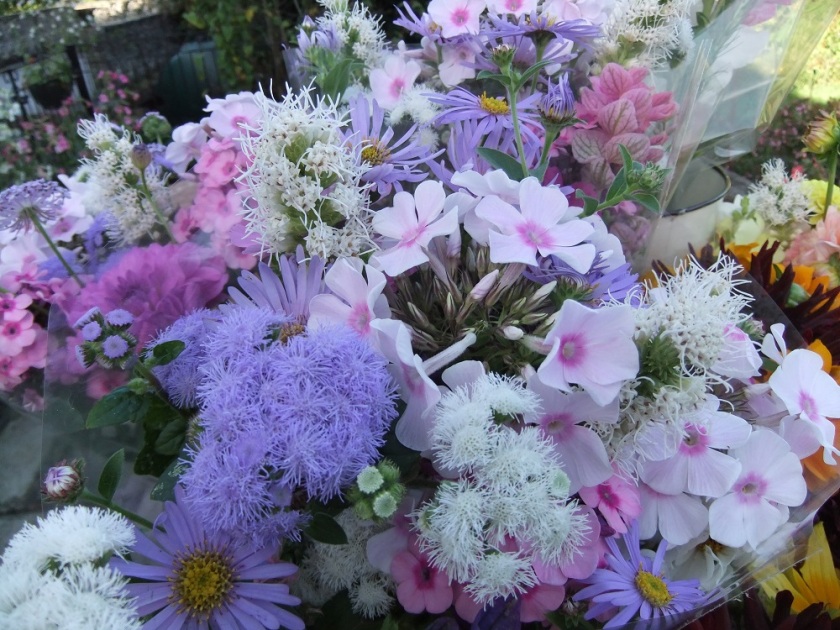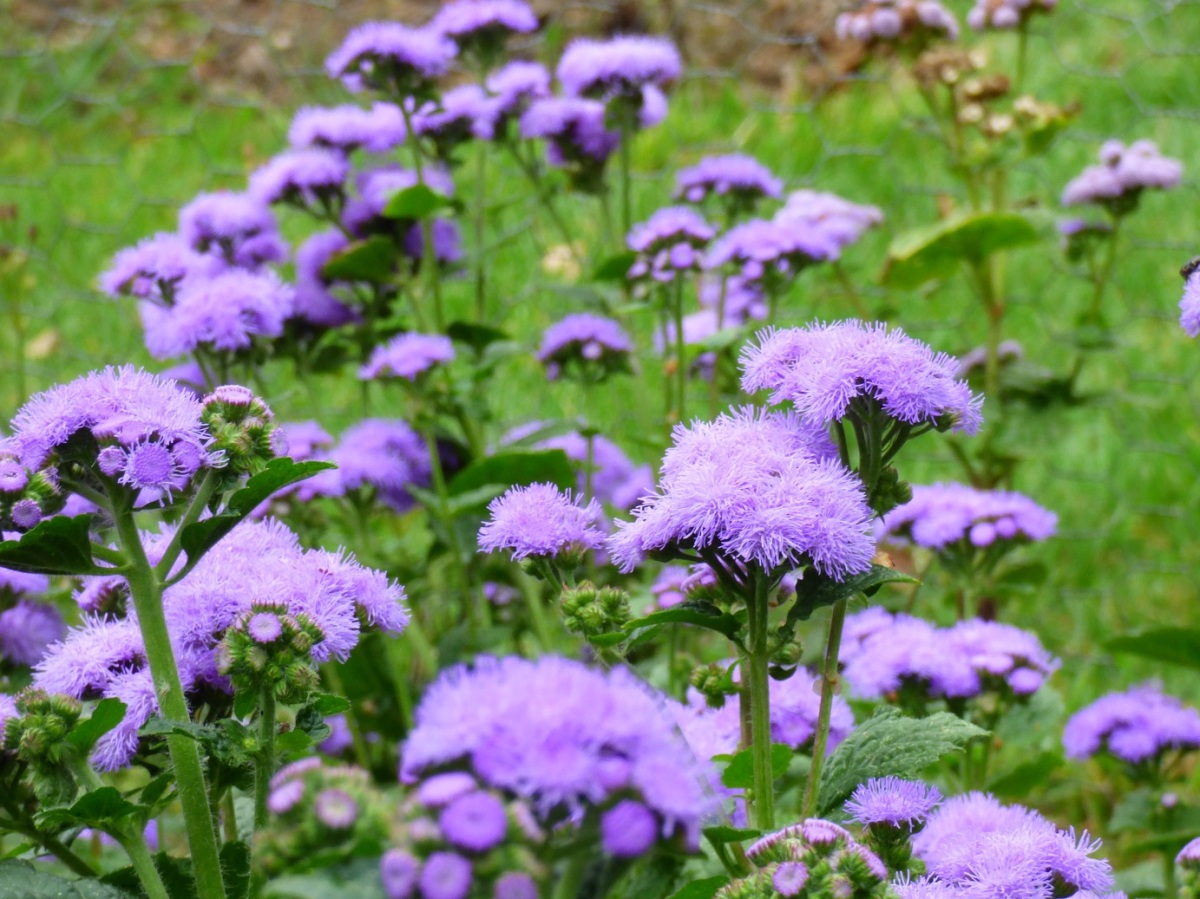We have grown Ageratum houstonianum, the Mexican Paintbrush, for a number of years now. Originally we knew Ageratum as one of those short carpet bedding plants that you would see alongside red salvias and orange marigolds in council bedding schemes in the local park.
Some ten years ago we started up Honey Pot Flowers and were trying out new varieties to grow and include in our summer bouquets of British country flowers. We were introduced to the F1 variety ‘Blue Horizon’ which produces flowers on much longer, robust stems and holds extremely well as a cut flower. We have been growing it ever since.
This variety of Ageratum has large, dense flower heads of powder blue. It is not a colour that you find very often in the garden and so makes an interesting addition to both the flower borders and cut flower arrangements. Most importantly, once established it does seem to be a very well behaved plant, growing and flowering reliably throughout the summer.
It is a native of Central America and Mexico and it is worth noting that in some countries it is considered an invasive weed. We have certainly not found this to be a problem here in the UK climate.
I have just sown this year’s seeds (14th February). The tiny seeds are surface sown on a half tray of pre-watered, well drained multi-purpose compost. To ensure the seedlings do not damp off in their early days we mix the compost with a generous amount of perlite. I like to water the compost before sowing so that the tiny seeds do not get washed into the corner.
The half tray is covered with cling film to remove the need for any extra watering before the seedlings emerge. They will sit on a warmish kitchen windowsill now for a few weeks until the green shoots appear at which point we will slowly loosen the cover and acclimatise the small plants before removing the cling film altogether.
Looking at previous years’ records I will be pricking these out into larger trays in about five weeks time (towards the end of March), and will have planted them out into the garden by 6th May. They are not frost hardy so this would need to be adjusted to suit your own circumstances.
Our past records also indicate that we have been picking Ageratum for cutting by mid-June and they then continue to flower right through to the first frosts in the Autumn.

Over the years we have tried them in various parts of the garden but they do seem to grow best in full sun in soil that remains moist all the summer. Our garden soil can dry out rapidly in the height of the summer but there are areas in part shade that retain some moisture in the soil. The Ageratum also seem to thrive in these areas.
What we particularly like about Ageratum is how trouble free it is. It does not seem to be attacked by pests which is ideal if you want to grow good quality, clean stems for cutting, arranging and/or selling. In researching the plant this year I was surprised to find that it has its own secret defence mechanisms when it comes to fending off insects.
Ageratum has evolved a method of protecting itself from insects by producing a compound that interferes with the insect organ responsible for secreting juvenile hormone during growth and development. The chemical triggers the next moulting cycle prematurely and renders most insects sterile. Fascinating stuff!


I usually grow A. ‘Blue Horizon’ for cutting, it’s a winner. You reminded me I forgot to get seeds for it this year.
LikeLiked by 2 people
Interesting post and lovely pictures. xx
LikeLiked by 2 people